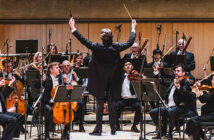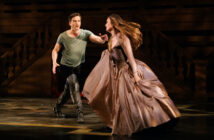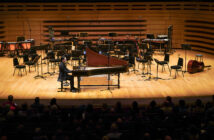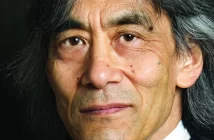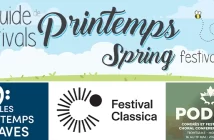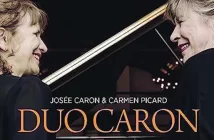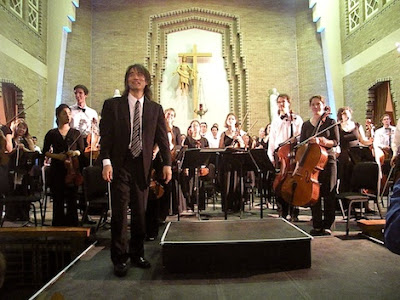
When the Knowlton Festival folded two years ago, the Orchestre symphonique de Montreal (OSM) and its chief conductor, Kent Nagano, needed to find an alternative venue for some of their summer music-making. An inspired choice was the Orford Festival. While last season’s appearances were uneven, this summer everything came together and the results were impressive.
Last summer at Orford, the OSM gave two full concerts under Nagano, who also worked with the Orford Academy Orchestra (OAO) on a third concert. The venue for all three performances was the Saint-Patrice Church in Magog. This year, the OSM gave only one full orchestra concert, which was presented at the University of Sherbrooke. Some OSM members were also involved in chamber music performances. The OAO concert under Nagano was presented at the Saint-Jean-Bosco Church in Magog. The three concerts I attended were packed, even with a top price of $85 in Sherbrooke.
Tan Dun Gives Schafer’s Soundscape New Dimension
 The highlight for me was the Sherbrooke concert. The OSM has not appeared in this city for many years and it was gratifying to see such an enthusiastic response. Nagano’s theme for the evening’s programme was a “Journey to the Heart of Nature;” hence the selection of (photo: right) Tan Dun’s Water Music, Debussy’s La Mer and Beethoven’s Symphony No. 6 Pastoral. Tan Dun’s Water Concerto is a complex and strange piece for any audience, but the folks in Sherbrooke clearly found it entertaining, as did I. Although the Salle Maurice-O’Bready at the University of Sherbrooke has extremely dry acoustics, and lacks the warmth, blend and presence one expects from a first-class concert hall, it did provide a clarity of sound that served the Tan Dun piece quite well.
The highlight for me was the Sherbrooke concert. The OSM has not appeared in this city for many years and it was gratifying to see such an enthusiastic response. Nagano’s theme for the evening’s programme was a “Journey to the Heart of Nature;” hence the selection of (photo: right) Tan Dun’s Water Music, Debussy’s La Mer and Beethoven’s Symphony No. 6 Pastoral. Tan Dun’s Water Concerto is a complex and strange piece for any audience, but the folks in Sherbrooke clearly found it entertaining, as did I. Although the Salle Maurice-O’Bready at the University of Sherbrooke has extremely dry acoustics, and lacks the warmth, blend and presence one expects from a first-class concert hall, it did provide a clarity of sound that served the Tan Dun piece quite well.I was reminded of Canadian composer R. Murray Schafer’s term “Soundscape“ while listening to Tan Dun’s Water Concerto. Schafer was a pioneer in encouraging audiences to appreciate all the fascinating sounds in our world. In his piece, Tan Dun explores virtually all the ways one can use water to make music. There are three solo percussionists in the piece and each one works with what looks like a very large, transparent plastic salad bowl full of water. With their hands, they tap out all sorts of rhythms. They also use water glasses instead of hands to beat out sounds in the water. Finally, the lead percussionist – the astonishing Wang Beibei (photo: below right)– placed some wooden salad bowls of various sizes upside down in the large plastic bowl and using drumsticks, created still more fascinating sounds.
 One might well ask how delicate water sounds could possibly compete with the accompaniment of a symphony orchestra. The answer is that each of the bowls of water has a microphone attached, and that Tan Dun’s orchestral scoring is complementary rather than combative.
One might well ask how delicate water sounds could possibly compete with the accompaniment of a symphony orchestra. The answer is that each of the bowls of water has a microphone attached, and that Tan Dun’s orchestral scoring is complementary rather than combative.One of the most effective episodes in the piece has the percussionists beating out galloping horse sounds in their water bowls while wind players in the orchestra contribute the sounds of neighing horses. Corny? Maybe in the telling, but certainly not in the playing. To my ears it was artful and good-humoured.
It should be emphasized that in too many contemporary concertos, the orchestra is given little to do, much of it elementary if not inconsequential. Not so here. Many of the techniques and rhythms could only be executed by a first-rate body of players. Nagano and the OSM played brilliantly.
Sea a Little Dry, but Sounds in Countryside Lush and Fresh
Debussy’s La Mer was also well played but suffered from the dryness of the hall. The timpani riff at the end of the piece, although pounded out with authority, sounded like someone beating on a table top with a pair of hammers.
The OSM under Nagano recently made a recording of Beethoven’s Pastoral Symphony, scheduled for release this fall, and the orchestra’s performance on this night certainly reflected the most detailed preparation, giving a sense that Nagano had personally inscribed dynamic markings in every bar of each player’s part. There were sounds I felt I was hearing for the first time simply because Nagano and his players had taken such care over balances. This performance was not only well-rehearsed; it was beautiful and joyful.
As will everything that the OSM played this season at Orford, the Pastoral will be repeated August 16-18 at the Edinburgh Festival. With that international exposure in mind, I must mention that the horn playing in the Beethoven and in several other works was unacceptably shaky. While Beethoven calls for just a pair of horns in the Pastoral, in many performances a third, even a fourth player is often added to spell off the others. Nagano might consider that option for Edinburgh.
Theme of Social Landscapes, Real and Imagined
 The Orford Academy Orchestra (OAO) concert began with Karl Amadeus Hartmann’s lugubrious Symphony No. 4. I can’t imagine what led Nagano to choose such a dreadful piece for a summer concert in Magog. It was written in 1946 in response to the terrible war years in Germany. Clearly, noble sentiments do not always translate into great music. This 33-minute piece for string orchestra certainly challenged the young players – perhaps that was the point of the exercise – but the Symphony No. 4 seems to me academic and tedious.
The Orford Academy Orchestra (OAO) concert began with Karl Amadeus Hartmann’s lugubrious Symphony No. 4. I can’t imagine what led Nagano to choose such a dreadful piece for a summer concert in Magog. It was written in 1946 in response to the terrible war years in Germany. Clearly, noble sentiments do not always translate into great music. This 33-minute piece for string orchestra certainly challenged the young players – perhaps that was the point of the exercise – but the Symphony No. 4 seems to me academic and tedious.The OAO is much improved this season, and the Saint-Jean Bosco Church is a much better venue for a symphony concert than last year’s Saint-Patrice. Under Nagano’s direction, the OAO gave an accurate and exciting rendition of Stravinsky’s Petrouchka.
Guest artist on the OAO programme was the superb pianist Benedetto Lupo, whom I had heard several times in Austin, Texas. On this occasion he played Mozart’s Piano Concerto No. 27 with verve and just the right amount of flexibility in dynamics and tempo. Nagano’s accompaniment, however, was lighter and more period-oriented than the Mozart style offered by his soloist.

Schubert Octet a Priceless “Prelude”
On the same evening and in the same venue – August 4, Saint-Jean Bosco Church (photo: right) – members of the OSM played Schubert’s Octet. The Schubert was played at 6 pm and the OAO concert at 8 pm. I assumed – wrongly, as it turned out – that the Schubert was a prelude to the orchestra concert. But, in fact, even though it was only an hour long and devoted to only one piece, it was sold as a separate concert with tickets costing $22. This bit of programming comes perilously close to price-gouging.
On the other hand, the Schubert Octet was played so well it could very accurately be described as priceless. With Andrew Wan in the leader’s chair, phrasing was consistently shapely and the players responded to each other with the utmost concern for timbre and balance. Equally impressive was the choice of tempi. With illustrious performances by the Vienna Octet and the Berlin Octet still ringing in my musical memory, I have long been convinced that this music needs time to breathe and that moderate tempi pay enormous dividends. The OSM players obviously feel the same way and gave us sublime Schubert.
So this was a great week for Nagano, the OSM and Orford, not to mention the music-lovers of Magog and Sherbrooke. The venues have been sorted out, the qualitative bar has been raised and just a little more tinkering needs to be done in programming and marketing. I am looking forward to 2012!
Paul E. Robinson is the author of Herbert von Karajan: the Maestro as Superstar, and Sir Georg Solti: His Life and Music. NEW for friends: The Art of the Conductor podcast, Classical Airs.



